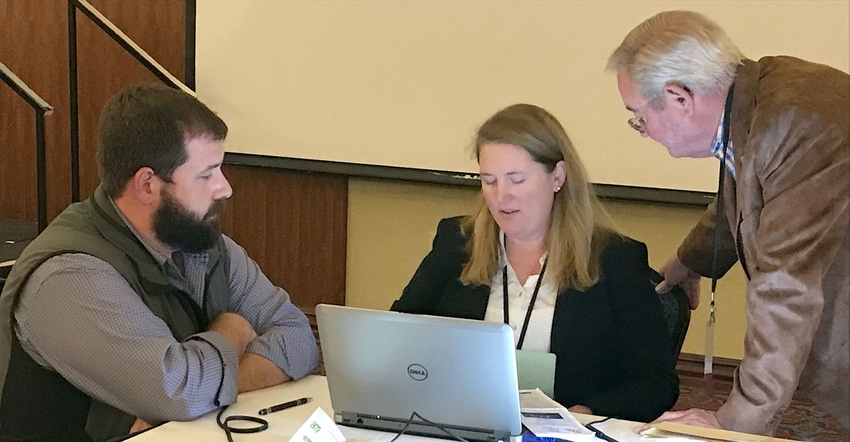
Before blaming applicator error or attributing poor pesticide performance to a faulty product, check the water.
"Failed application causes are not always obvious," says Kim Brown, pesticide safety coordinator at the LSU AgCenter in Alexandria, La.
Brown, speaking at the recent Louisiana Agricultural Technology and Management Conference in Marksville, La., said applicators might blame other factors, maybe weather or pest resistance, for poor control.
"Water can make up more than 95 percent of the spray solution," she says, "so poor water quality could affect pesticide efficacy."
Water quality factors that affect pesticides' ability to bind include turbidity, pH, hardness and temperature.
Those factors may reduce solubility and absorption by the target plant and could require retreatment.
Turbidity
Turbidity, Brown explains, is the haziness of a liquid caused by suspended particles. "Suspended positively-charged organic pesticides are attracted to and bind with negatively-charged particles in water. Some products, glyphosate, for instance, bind to suspended sediments, rendering them unavailable for plant uptake."
Brown says pesticide labels may offer warnings such as: "Product performance may be significantly reduced if water containing soil sediment is used as a carrier. Do not mix the product with water from ponds or ditches that is visibly muddy or murky."
"So, clear water should be okay?" she asks. "Maybe, maybe not." The pH makes a difference, too.
"Pesticides are normally formulated as weak acids or neutral to weakly alkaline," she says. "A general rule of thumb: Pesticides perform best in slightly acidic water, pH 4 to 6.5."
She says pH outside the preferred upper or lower range can compromise performance. "In some cases, pesticides will fall out of solution."
She says paraquat is not stable at pH above 7.
Test water pH
She advises testing water pH. A highly accurate test kit, she says, may be as much as $500. A cheap option, paper test strips, "are good for field testing. A hand-held device runs about $50 and is fairy reliable."
She says a pH of 5 to 6 is a good target.
Water with a pH of 5 to 8 should be good, then?
Maybe, but dissolved minerals, hard water, could cause trouble, too. "Pesticides bind with those minerals," Brown explains, "and can't enter the target pest."
Again, she recommends testing. "Lab testing is the most accurate and costs $6 to $10 per sample. Results are very reliable and should be available in three to five days."
Test kits are available, but Brown recommends users make certain the kits contain everything they need. Paper strips, she says, are cheap, "but not highly accurate."
Water is clear, free of minerals and the pH is well within range, what else could go wrong? Temperature.
"Water temperature above 102 degrees creates problems," Brown says, "and 40 degrees is too low." She says 72 degrees is a good target.
Big picture
She cautions pesticide applicators not to lose track of "the big picture. Drift, pesticide selection, application timing, etc., remain important concerns."
She says water plays an important role in effective pesticide performance. She offers a check list:
• Sediments can bind up pesticides.
• High pH (above 8) can be harmful to pesticides.
• High mineral content can bind up pesticides.
• Extreme water temperature can affect pesticide performance.
Before looking for something or someone to blame, she cautions, check the water.
About the Author(s)
You May Also Like






